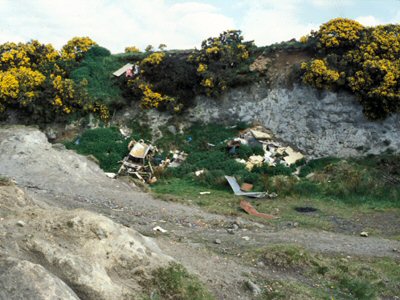Sandy Braes was a volcanic centre of extreme violence during the Palaeocene, around 65 million years ago (see Sandy Braes, site 517). The local rhyolitic lavas were derived from the basaltic lavas that dominated the Antrim Plateau and had evolved into viscous, quartz-rich rocks. Some of these lavas chilled to form a natural glass called obsidian and crystals of sanidine (potassium aluminium silicate), a high temperature form of a common feldspar mineral (orthoclase), are suspended in this fine-grained matrix. Orange-red opal is also found in tiny veins permeating these rocks, most likely to have been formed when hot springs, saturated in dissolved silica, were a common feature of the volcanic landscape.
